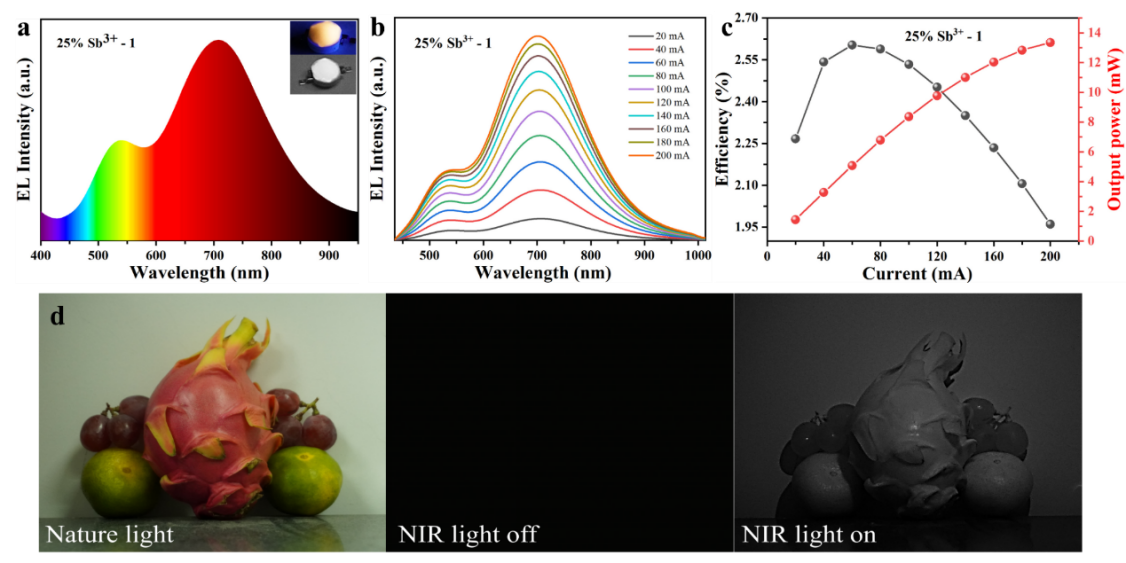Recently, The team of Professor Zou Bingsuo from SKL is entitled "Realizing efficient broadband near-infrared emission and multimode photoluminescence switching via coordination structure modulation in Sb3+doped 0D organic metal chlorides" was published in the Materials Horizons.

Recently, organic Sb(III)-based metal halides have achieved significant results in the visible light region due to their efficient emission. However, realizing efficient broadband near-infrared (NIR) emission in such materials is a great challenge. Herein, we developed three different NIR emitters via a coordination structure modulation strategy in Sb3+-doped zero-dimensional organic metal chlorides of (C20H20P)2MnCl4, (C20H20P)2ZnCl4, and (C20H20P)2CdCl4 with tetrahedral structure. More specifically, after the dopant Sb3+ is inserted into the host lattice, the coordination structures of Sb3+ ions can change from [SbCl5]2− square-pyramidal configuration to [SbCl4]− clusters, which will bring a larger lattice distortion degree to the excited state compared to the ground state, resulting in a larger Stokes shift. Thus, efficient NIR emission with near-unity photoluminescence quantum yield (PLQY) can be obtained in Sb3+-doped compounds under 365 nm excitation. Moreover, Sb3+-doped NIR emitters also show remarkable stabilities, which prompts us to fabricate NIR phosphor conversion light-emitting diodes (pc-LEDs) and demonstrate their application in night vision. More interestingly, the Sb3+-doped (C20H20P)2MnCl4 shows tunable emission characteristics, which can be tuned from green to greenish-yellow, orange, red, and NIR emission under different external stimuli, and thus we can demonstrate the applications of this compound in quintuple-mode fluorescence anti-counterfeiting and information encryption.